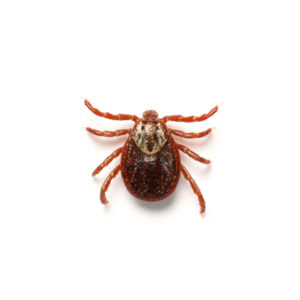Fleas in Albuquerque NM
Fleas are small (1/16 to 1/8-inch long), agile, usually dark-colored, wingless insects. They have tube-like mouth-parts adapted to feeding on the blood of their hosts. Their legs are long, the hind pair well adapted for jumping (vertically up to seven inches; horizontally thirteen inches – around 200 times their own body length, making the flea one of the best jumpers of all known animals (in comparison to body size). Their bodies are laterally compressed, permitting easy movement through the hairs or feathers on the host’s body (or in the case of humans, under clothing). The flea body is hard, polished, and covered with many hairs and short spines directed backward, which also assist its movements on the host. The tough body is able to withstand great pressure, likely an adaptation to survive attempts to eliminate them by such as mashing and scratching. Even hard squeezing between the fingers is normally insufficient to kill a flea.
Fleas lay tiny white oval-shaped eggs better viewed through a loupe. The larva is small, pale, has bristles covering its worm-like body, lacks eyes, and has mouth-parts adapted to chewing. The adult flea’s diet consists solely of fresh blood. In the pupal phase, the larva is enclosed in a silken, debris-covered cocoon.
Flea Habits
- Flea problems generally occur when a dog or a cat becomes infested and brings fleas into the home. Most wild animals carry fleas, and occasionally, infestations will occur when a wild animal like a raccoon or squirrel lives in an attic, crawl space, or under the deck.
- Adult fleas spend most of their time on the pet (dog or cat).
- The adult must feed on blood to produce eggs, laying about 450 during their lifetime.
- Their eggs fall off the pet and onto the pet bedding, couch, or carpeting.
- These eggs develop into maggot-like larvae which feed on the dried blood of the pets at the base of the carpet fibers.
- The length of the chemical-resistant pupae stage is variable ranging from 1 day to 1 year depending on pressure, carbon dioxide, and warmth.
Flea Life Cycle
The flea life cycle begins when the female lays after feeding. Adult fleas must feed on blood before they can become capable of reproduction. Eggs are laid in batches of up to 20 or so, usually on the host itself, which easily roll onto the ground. As such, areas where the host rests and sleeps become one of the primary habitats of eggs and developing fleas. The eggs take around two days to two weeks to hatch.
Once the flea reaches adulthood its primary goal is to find blood – adult fleas must feed on blood in order to reproduce. Adult fleas only have around a week to find food once they emerge, though they can survive two months to a year between meals. A flea population is unevenly distributed, with 50 percent eggs, 35 percent larvae, 10 percent pupae, and 5 percent adults. Their total life cycle can take as little as two weeks but may be lengthened to many months if conditions are favorable. Female fleas can lay 500 or more eggs over their life, allowing for phenomenal growth rates.
Need help with fleas?
We'll call you! Leave your information below.



